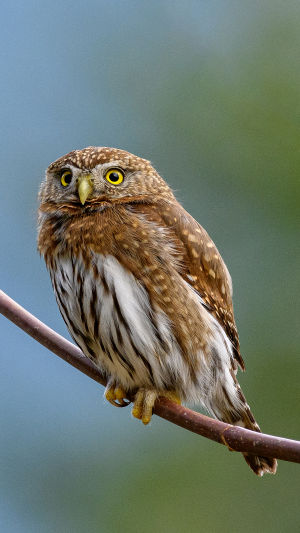Owls are often associated with their distinctive, owl-shaped appearance. They are playful creatures that easily capture attention and spark curiosity. However, because they are mostly active at night, they often appear mysterious and are not easy to spot.
Here are some interesting facts about owls that can help demystify them and teach us more about these fascinating creatures.
Owls have a remarkable sense of hearing. Their most notable feature is their extremely sensitive sense of hearing, which compensates for their lack of vision in the absence of moonlight.
Although owls do not have external ears, they have large earholes that form two deep slits on either side of their heads. These earholes are almost as high as their heads, and the feathers on their heads always hide the gap.
There is a flap at the front and back of the owl's earholes, which controls the size of the earholes and adjusts their hearing function. The feathers around the owl's earholes form a funnel that gathers sound waves, enhancing the resolution of sound waves and allowing for sound positioning.
It is precise because of this structure that owls' hearing is 5-10 times more sensitive than humans, making them particularly adept at detecting even the slightest noise made by wild rats.
Owls' eyeballs are fixed and cannot move. In the retina of their eyes, there is an abundance of rod cells but no cone cells, which causes the inside of their eyes to be cylindrical rather than spherical. You will never see an owl roll its eyes, but you can observe how its neck can rotate to an incredible degree.
Owls are pairs of toed birds, which means their feet have two forward toes and two backward toes. Unlike most other paired-toed birds, owls can turn one rear toe forward to help them grasp and walk.
Owls are colorblind, which sets them apart from other birds that can distinguish colors. They cannot recognize colors because there are no cone cells in their retinas. While color perception helps birds like crows to find a place to land when flying at high altitudes and catching insects, it does not serve the same purpose for owls.
Owls can fly silently. The quiet flight of owls results from several noise reduction factors. The shape and structure of their wing airfoil and primary flight feathers play a crucial role in noise reduction.
A large number of fluff distributed in other parts of the owl's body, along with their skin and subcutaneous structure, contributes to sound absorption and noise reduction. The mechanical properties of owl feathers contribute to noise reduction and sound absorption, making their feathers particularly complicated.
Owls are skilled hunters with a short, strong beak that features hooked tip, powerful legs, and hooked talons for grabbing and tearing prey. With the help of their keen hearing and vision, owls can accurately judge the location of their prey and launch silent "lightning attacks" on them.
Owls can adjust the positioning of their prey at any time, making their attacks swift and decisive.





